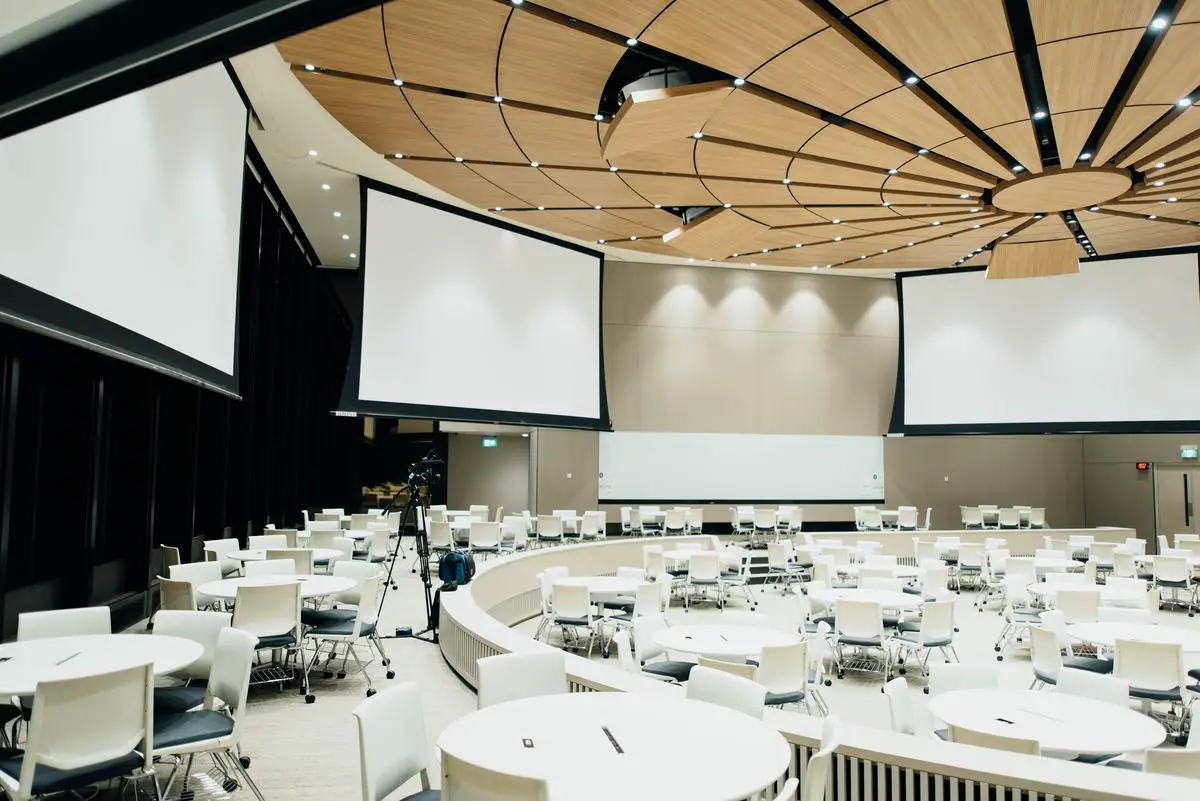In today’s professional world, networking events are critical junctures that can catalyze career growth, fostering collaborative avenues and boosting personal visibility. These strategic platforms offer the opportunity to build valuable relationships with other professionals in one’s industry, paving the way for potential partnerships and knowledge exchange. However, an increasing phenomenon within this scenario is the issue of no-shows. The ripple effect of these no-shows is often underestimated, impacting not just the event dynamics but also creating missed opportunities for the attendees. Furthermore, consistent no-shows can potentially tarnish professional reputations, leading to a negative impact in one’s career progression. In this discourse, we aim to explore this phenomenon in detail, diving into its root causes, prevalent challenges, and possible mitigation strategies.
Understanding the Importance of Networking Events
Understanding the Importance of Networking Events
Networking events are primarily organized with the intent of providing opportunities for participants to meet, connect, and build beneficial relationships within their industry and beyond. An inherent element of professional growth and development, these events allow businesses and professionals to boost their visibility; thereby expanding their sphere of influence and potential customers. This is crucial in competitive environments where visibility plays a substantial role in determining success.
Moreover, these events often contribute to fostering collaborations. It’s a platform where professionals can exchange ideas, discuss emerging trends, and potentially initiate collaborations. Such partnerships often result in innovative solutions and strategies that could drive more significant professional and business growth. Through these partnerships, professionals can tackle bigger projects and broaden their client base, thus further boosting their profile within their industry.
Networking events likewise pave the way for knowledge sharing. Experts in various fields share their experience, discoveries, and insights which attendees can then apply in their own professional practices. This set-up promotes continuous learning and professional development, which is pivotal for career progression.
On the contrary, not attending these events often leads to missed opportunities. By merely choosing not to attend, professionals could miss out on potential leads, potential partnerships, and valuable knowledge and insights they could have acquired during the event.
Understanding the Networking Event No-Show Phenomenon
Networking events can bring immense value to professionals, from building new connections to fostering collaborations. However, one stumbling block that hinders the effectiveness of these gatherings is the high no-show rate. There often exists a stark contrast between the number of individuals expressing interest in and registering for the event and the count of attendees who actually make it.
Event organizers suffer as the increasing pattern of absenteeism wastes resources and depreciates the return on investment. Furthermore, this translates into decreased event value for professionals who do show up. The obvious fallout is fewer connections, reduced ideation scope, and diminished partnership opportunities.
For the professionals who back out, the negative implications are twofold. First, they lose potential partnerships and opportunities that could be leveraged for their benefit. Second, habitually abstaining from these events could create an impression of unprofessionalism, damaging their reputation within the community.
The idea of being a networking event no-show may seem inconsequential, but its ramifications can be impactful. By avoiding planned professional interactions, professionals risk hindering their growth and tarnishing their industry stature. The true implications of the no-show behavior at networking events can be understood by viewing the opportunity cost associated with missed chances.

The Challenge of Networking Event No-Shows
Unpacking the ‘No-Show’ Trend at Networking Events
The trend of ‘no-show’—professionals registering for a networking event but not attending—is growing increasingly evident. The scale of its occurrence fluctuates from event to event; some witness just a smattering of absent registrants, while others experience a massive percentage drop in expected attendees. This trend reflects not only on the wasted resources, but also hints at a concerning lack in adherence to professional commitments.
Implications of No-Shows
No-shows at networking events can create multiple obstacles and challenges. For starters, it disrupts the dynamics of an event. The turnout determines many factors such as allocation of resources, seating arrangements, and food and beverage quantities. Unexpected low turnout may result in wastage or unnecessary expenses for the organizers.
Additionally, networking events are opportunities for professionals to connect, collaborate and create synergies. When people register and don’t show up, it results in missed opportunities. For instance, one no-show attendee could have been a potential client or collaborator for another participant.
Detrimental Impact on Professional Reputations
Professionalism is closely tied to reputation, and continuous no-shows can tarnish a professional’s image. Continually failing to meet commitments and show respect for other people’s time may lead others to question a person’s reliability and integrity. This can have far-reaching consequences, as word-of-mouth carries significant weight in professional circles.
Mitigation: Solutions To The ‘No-Show’ Problem
While it is impossible to completely eliminate the phenomenon, event organizers can employ measures to mitigate no-shows’ impact. The use of waitlists can ensure maximum attendance even in the event of last-minute cancellations. Regular reminders and follow-ups can also encourage registered attendees to honor their commitment.
Moreover, creating an atmosphere of exclusivity and assigning true value to networking events can also contribute to reducing no-show incidences. When people perceive that they stand to lose something of value by not showing up, they are more likely to attend.
Assessing the Impact of No-Shows and Enhancing Attendee Turnout
Missing attendees at networking events lead to skewed key performance indicators and misinterpreted return on investment calculations. The substantial number of people who register but fail to show up have a significant bearing on the ultimate success and perceived value of these events.
To curb this, event organizers can consider adopting rigid cancellation policies or incorporating non-refundable fees. Increasing the level of attendee engagement may also prove beneficial. Direct attendee involvement, in form of personal invitations or follow-up communications, can potentially minimize the prevalence of last-minute cancellations.
Campaigns encouraging participants to update their RSVP status can also lower the no-show rate. Ideally, if these approaches are strategically employed and clearly communicated, they could result in a more precise attendance forecast, thereby leading to more successful networking events.

Behind The No-Show: Analyzing the Reasons
Deciphering the Root Causes for Networking Event No-Shows
The reasons behind the high rate of no-shows at networking events are multifaceted and often varied; however, some common themes can define this phenomenon. A prevalent reason is the unexpected professional obligations. This covers surprises like unplanned meetings to urgent work deadlines, which often overtake the networking event on the priority list. Despite having positive intentions of attendance, these unplanned-for professional commitments leave many registered individuals no option but to be no-shows at these events.
Unavoidable Personal Emergencies
Next come unavoidable personal emergencies, an all-too-common factor contributing to last-minute cancellations. These can include sudden illness, family emergencies, or unexpected personal obligations that supersede the event. Life is unpredictable and various unexpected events can prevent individuals from attending an event they had planned to.
Geographical Distance and the Challenge of Travel
The geographical distance to the event location or the challenge of navigating the commute can contribute to the no-show count. Those who live far from the venue may underestimate travel times, encounter unexpected traffic or transportation issues, or simply decide that making the trek is not worth the effort. This is especially true for individuals who have other engagements before or after the event.
Perceived Low Return on Investment and Lack of Interest
On a less event-based note, some professionals may perceive networking events as having a low return on investment (ROI) for their time and effort. This perspective can lead to a lower commitment level and increase the odds of a no-show. Similarly, a lack of interest in the event theme or speakers, or a perceived incongruity between the promised content and personal or professional interests can dampen enthusiasm and lead to absence.
Competing Commitments and Scheduling Conflicts
Scheduling conflicts and competing commitments often vie for an individual’s time. When two or more events, personal or professional, are scheduled for the same time slot, individuals must decide which to prioritize. Often this could mean choosing an event that aligns more with their immediate needs or preferences, leaving the other event with a vacant seat.
Understanding the Scope of Social Fatigue
Lastly, underappreciated but significantly impactful is the element of social fatigue. Professionals who regularly attend back-to-back meetings and events can experience burnout, making them likely to bow out of additional networking obligations. Moreover, professionals introverted by nature may find networking events draining and may therefore opt-out, contributing to the no-show tally. In the age of digital remote events, ‘Zoom fatigue’ or the exhaustion from constant video calls can also lead to increased no-show rates at virtual networking events.
The array of factors influencing no-shows at networking events is both broad and complex. Understanding these dynamics is crucial for event organizers who are trying to minimize the effect of no-shows on their events and devise strategies to increase attendance rates. Equally, attendees stand to benefit from recognizing these forces in order to better engage with and commit to future events.

Mitigating the Impact of No-Shows
Appreciating the Consequences of No-Shows for Networking Events
Failure to attend networking events, or “no-shows”, can greatly affect the event’s overall performance, undermining the planned activities and altering the anticipated dynamics. This often leads to financial implications, especially when the event has been designed and budgeted based on a certain headcount. In addition, no-shows can distort the expected range and number of networking opportunities, thereby adversely affecting the quality of the event for other attendees.
Developing a Prevention Strategy: Anticipating No-Shows
A critical step towards mitigating the impact of no-shows is to preemptively anticipate them. Statistical data suggests that typically 10% to 20% of individuals do not attend networking events they’ve registered for. Thus, planning for a specific percentage of no-shows can help in making more accurate arrangements. Using an overbooking strategy, similar to airlines and hotels, can also be an effective way to compensate for anticipated no-shows.
Adopting Flexible Event Planning Approaches
Adapting the event logistics to better accommodate possible fluctuations in attendance is another practical approach. This could mean selecting a flexible venue that can easily adjust to the final attendee count or planning an agenda that maintains its dynamism regardless of the number of participants. Choosing catering options that allow for last-minute adjustments can also help in avoiding financial losses.
Leveraging Technology for Better Participant Management
Making use of technology options to manage attendee lists and coordinate communications can significantly diminish the impact of no-shows. Event management software often provides capabilities to better track RSVPs, send automated reminders, and allow waitlisted individuals to fill in the gaps left by last-minute dropouts.
Engaging Participants: Increasing Show-Up Rates
Aside from logistics, strengthening your commitment to creating value for the participants can also impact their likelihood to attend. A compelling agenda, high-profile speakers, and unique networking opportunities can incentivize participants, thereby increasing show-up rates. Fostering a sense of community before the event through online social platforms can also create momentum and commitment among attendees.
Handling No-Shows: Maintaining Optimal Networking Dynamics
The dynamics of the event should be adaptable to the number of attendees. Facilitators should be prepared to manage the energy of the event and adjust activities to accommodate no-shows. To maintain the networking opportunities, organizers can proactively facilitate connections, encouraging attendees to engage with a wider range of participants.
In aiming to mitigate the issues caused by no-shows at networking events, certain effective measures can be adopted. Organizers can use the insights gained from each event to hone their upcoming strategies. This approach helps in enhancing the dynamism and productivity of these events.

Photo by chuttersnap on Unsplash
Preventive Measures Against No-Shows
The Role of Robust Communication in Improving Attendance at Networking Events
An effective strategy to reduce the rate of no-shows at networking events involves honing the communication with prospective attendees. Crucial details about the event, including an overview of speakers, the venue, topics of discussion, and the schedule, need to be clearly communicated. This not only keeps attendees well-informed but also fuels their interest in the event, thereby motivating them to attend.
Besides disseminating initial event details, organizers should plan for consistent follow up communication. Prompt updates and reminders through emails or SMS can ensure that the event stays fresh on the minds of prospective attendees. Emphasizing on the shared benefits of the event, whether it’s enriching learning opportunities or the potential to forge valuable connections, can elevate the allure of the event for the attendees.
Flexible Formats: Catering to Diverse Preferences
Another mechanism to prevent networking event no-shows relates to the format of the event. Not everyone is comfortable or able to engage in traditional face-to-face networking events. Therefore, offering more flexible formats such as webinars, live streams, and virtual meetups can cater to a broader audience.
Moreover, a recorded option would allow those who are unable to commit to a specific event time to still be involved at a later date as per their convenience. While this approach may not immediately bring down no-show rates, it can result in expanded reach and higher overall engagement in the long term.
Transparency about Guest List
Sharing the preliminary guest list can be an effective strategy to minimize no-shows. This will help attendees know who else is attending the event and understand the opportunities for networking. The dynamic of knowing who will be at the event beforehand can instigate excitement and increase the likelihood of participation.
Incentivization and Acknowledgement
Offering incentives such as discounts, freebies, or opportunities for spotlight promotion can be highly motivational. This tactic not only encourages participation, but also fosters a sense of loyalty among attendees, making them more likely to attend future events.
In addition to incentivizing attendance, acknowledging people who consistently show up at your events can be beneficial. This could be done via exclusive offers, member spotlights or simple public acknowledgments. This gesture boosts morale and encourages punctuality and reliability.
Employing RSVP Technology
Utilizing efficient RSVP technology is another significant way to prevent event no-shows. Advanced event platforms enable prompt and personalized communication with attendees and provide real-time insights into attendee behavior, helping to predict possible no-shows.
Based on such data, further strategies can be devised to follow-up with potential no-shows more closely. Various platforms also offer options for reminding guests about the event at a scheduled time of the attendants’ choosing, drastically enhancing the chances of turning up.
Solidifying the Value Proposition
Ensure that the networking event provides enough value to attendees. This could be in the form of learning opportunities, skills sharing, career advancement options, and excellent networking possibilities. When attendees perceive a high degree of value in attending the event, they are more likely to commit to attending it.
Ultimately, addressing the barriers to attendance and providing clear benefits or incentives for attending are central to reducing no-show rates at networking events. Implementing these strategies of improved communication, flexibility, transparency, incentivization, and utilizing technology can create an environment that fosters consistent attendance.

Networking events are an integral part of any professional sphere – they serve as bridges, connecting individuals to opportunities that can propel their careers forward. It’s crucial, therefore, to pay attention to the factors that lead to no-shows and work towards preventing them. By adopting strategies such as enhanced communication, flexibility in event formats, and perhaps incentivization, organizers can reduce no-show rates. This not only ensures an optimized networking event but also holds the potential to engage individuals in professional commitments more responsibly. No-shows at networking events present challenges but also provide the scope to learn and improve. And as we navigate this subject, the ultimate goal remain: elevating the efficacy of networking events and enriching the experiences of attendees.


Recent Comments